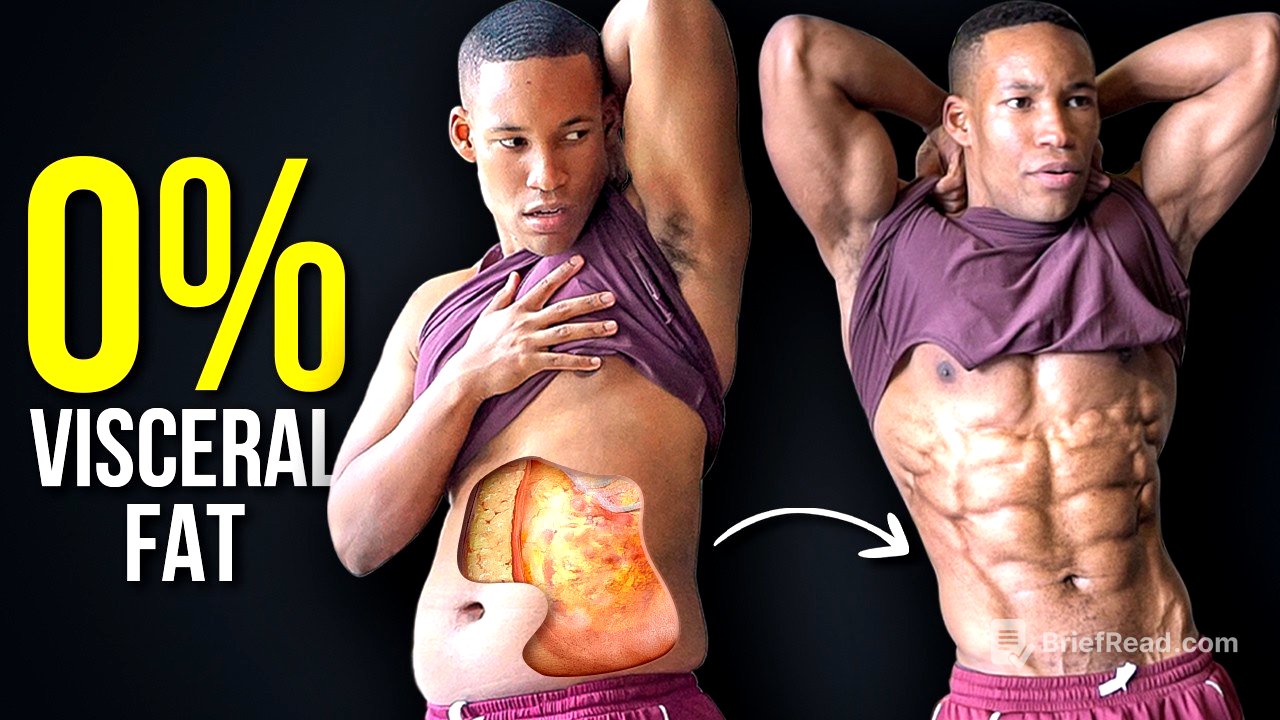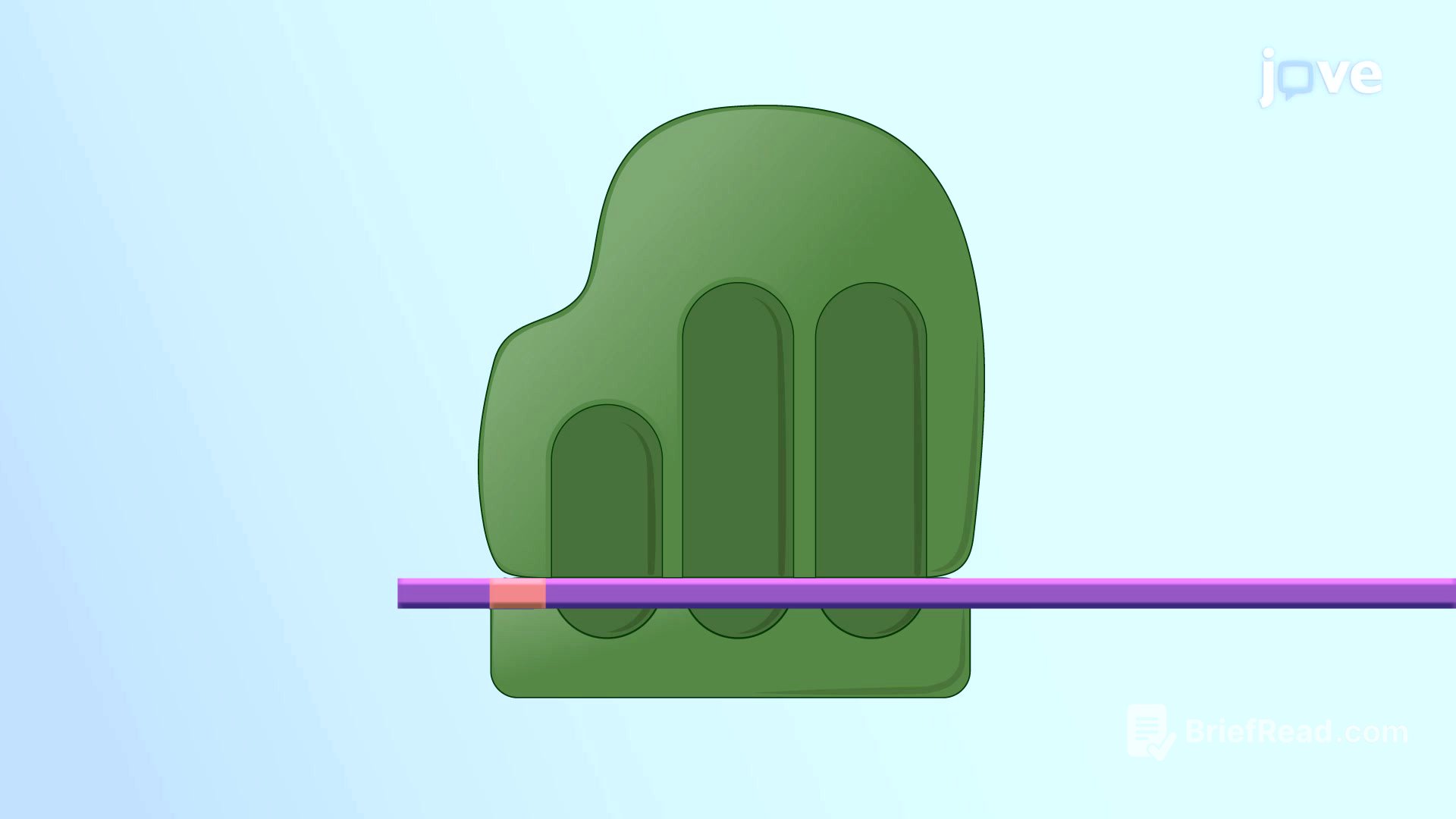TLDR;
This video provides a comprehensive guide on how to reduce visceral fat in one week through a five-step process. It emphasizes the dangers of visceral fat, explains how to measure it, and offers practical advice on diet, intermittent fasting, exercise, stress management, and sleep. The guide includes specific food recommendations, exercise routines, and lifestyle adjustments to help viewers achieve noticeable progress quickly.
- Visceral fat is dangerous because it inflames organs and increases the risk of chronic diseases.
- Measuring waist circumference is a simple way to assess visceral fat levels.
- Intermittent fasting, a diet of whole foods, and regular exercise are key to reducing visceral fat.
- Managing stress and prioritizing sleep are crucial for overall health and fat loss.
Introduction: Losing Visceral Fat [0:00]
The video introduces a step-by-step guide to losing visceral fat in one week, addressing a common issue exacerbated by modern society and food systems. Many people unknowingly accumulate visceral fat, which can be detrimental to health. The protocol outlined aims to reverse this trend, drawing from the presenter's personal experience and clinical observations. The presenter assures that significant progress is achievable within a week, even though more substantial changes may take longer for those with higher body fat percentages.
Why Visceral Fat Is Dangerous [1:06]
Visceral fat, unlike subcutaneous fat, is a toxic sludge that surrounds organs, releasing inflammatory markers and causing a burning sensation throughout the body. This increases the risk of cardiovascular events, diabetes, and other chronic conditions. The presenter emphasizes the direct link between visceral fat and these health risks, highlighting the importance of eliminating it.
Step 1: Measuring Visceral Fat [2:06]
The first step in reversing visceral fat is measurement. Using a tailor's tape, measure the circumference of your belly around the belly button or the most distended part of your waist. A waist size over 40 inches (102 cm) for males and over 35 inches (88 cm) for females indicates visceral fat. Regular measurements, taken every Sunday at 8:00 a.m., will help track progress. For a more precise assessment, DEXA scans or MRIs can determine the exact amount of visceral fat.
Step 2: Intermittent Fasting [4:34]
Intermittent fasting is presented as a simple way to control blood sugar levels, which is crucial for reducing visceral fat. High blood sugar levels cause the body to store excess glucose as fat around the organs. Start with a 12/12 fasting schedule, gradually moving to 14/10 and then 16/8. This allows the body to adapt and mitigates potential side effects like fatigue and hunger. During fasting periods, drink water, sparkling water, teas, and black coffee without sugar to maintain low insulin levels and promote fat loss.
Eliminating Ultra-Processed Foods [9:16]
Eliminating ultra-processed foods is essential because they cause rapid glucose spikes. Unlike whole foods, which require the body to process them, processed foods are quickly absorbed into the bloodstream, leading to fat storage. Foods with five ingredients or less are ideal, while those with more than ten are considered ultra-processed. Examples of healthy options include whole eggs with egg whites and Ezekiel bread for breakfast, and white fish with sweet potatoes for lunch.
Foods to Eat: Protein, Carbs, and Fats [12:00]
The presenter breaks down the best foods to eat into three categories: protein, carbs, and fats. For protein, whey protein, chicken breast, sirloin steak, and white fish are recommended, aiming for 50g of protein per meal. Carbohydrates should be selected based on the glycemic index, focusing on medium to low glycemic options like fruits, vegetables, oatmeal, and sweet potatoes. Healthy fats include avocados, extra virgin olive oil, flax seeds, and Brazil nuts.
Step 3: Increasing Blood Flow with Exercise [15:56]
Increasing blood flow is crucial for incinerating visceral fat. Resistance training builds muscle, which acts as a sponge for glucose, while moderate to high-intensity interval training (HIIT) is most effective for fat loss. The presenter recommends walking 10,000 steps daily and incorporating the Japanese walking technique (3 minutes of speed walking followed by 3 minutes of regular walking for five rounds). For HIIT, options include incline walking or sprinting on a treadmill, maintaining a heart rate above 140 beats per minute.
Resistance Training and Cardio Routine [21:36]
The presenter provides a resistance training protocol and cardio routine to help burn visceral fat. These routines are designed to complement the other steps in the plan, enhancing overall fat loss and improving cardiovascular health.
Step 4: Stress and Sleep [22:18]
Prioritizing sleep and managing stress are essential for overall efficiency and fat loss. Aim to sleep at 10 p.m. and follow the "10-3-2-1" protocol: no caffeine 10 hours before bed, no food three hours before bed, no fluids two hours before bed, and reduced screen exposure one hour before bed. Stress management techniques include meditation (using apps like Calm) and journaling. High cortisol levels, caused by chronic stress, can hinder muscle building and promote fat gain.









